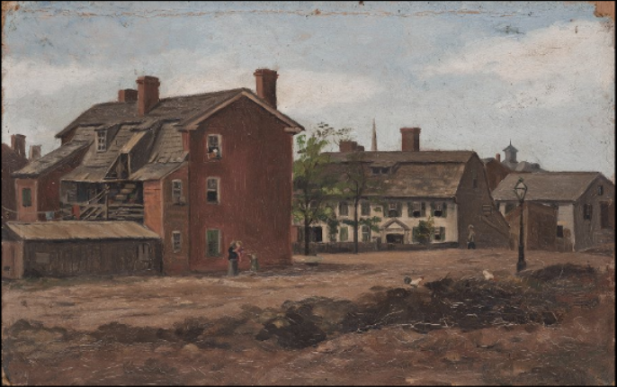In my research I am seeking to shape two different women who lived in Hartford during the 19th century in the context of the visual arts; the wealthy Elizabeth Colt who had direct access to sophisticated Western culture both nationally and abroad and the “common” woman. She understood and had the feel for the local soil in her urban neighborhoods. From the text, The Colonial Revival in America, the 19th century experienced “urbanization, with its physical and human squalor and industrialization, its discontents caused much of American culture to move inside and turn inward.” How did this resonate in the Hartford home? And in what ways does it connect with Victorian ideals?

It is an interesting ride as I delve through Elizabeth’s collection of both commissioned and purchased works and finding parallels with the common woman through the visual arts created within the domestic sphere. In what ways does little to no contact with the world of metropolitan art inform what she creates or is able to purchase? As I have written in previous blogs, I also seek the opportunities she had with established collections at museums like the Wadsworth Atheneum. Given this book is a sojourn into the visual, I am carefully seeking objects in a variety of media; from painting to needlework. I am also thinking (thank you Dr. Colleen Darnell!) to find a specific woman living amongst Hartford’s middle class during the same period as Elizabeth Colt, her neighbor in the community. I will be searching, knee deep in the archives of the Connecticut Historical Society for this woman. My hopes in my next blog is I will have a face and a name. I included in this blog post a painting of a Hartford street scene by Amelia M. Watson born in 1874 in East Windsor who taught women to paint in both Hartford and Boston and was produced book decorations.
